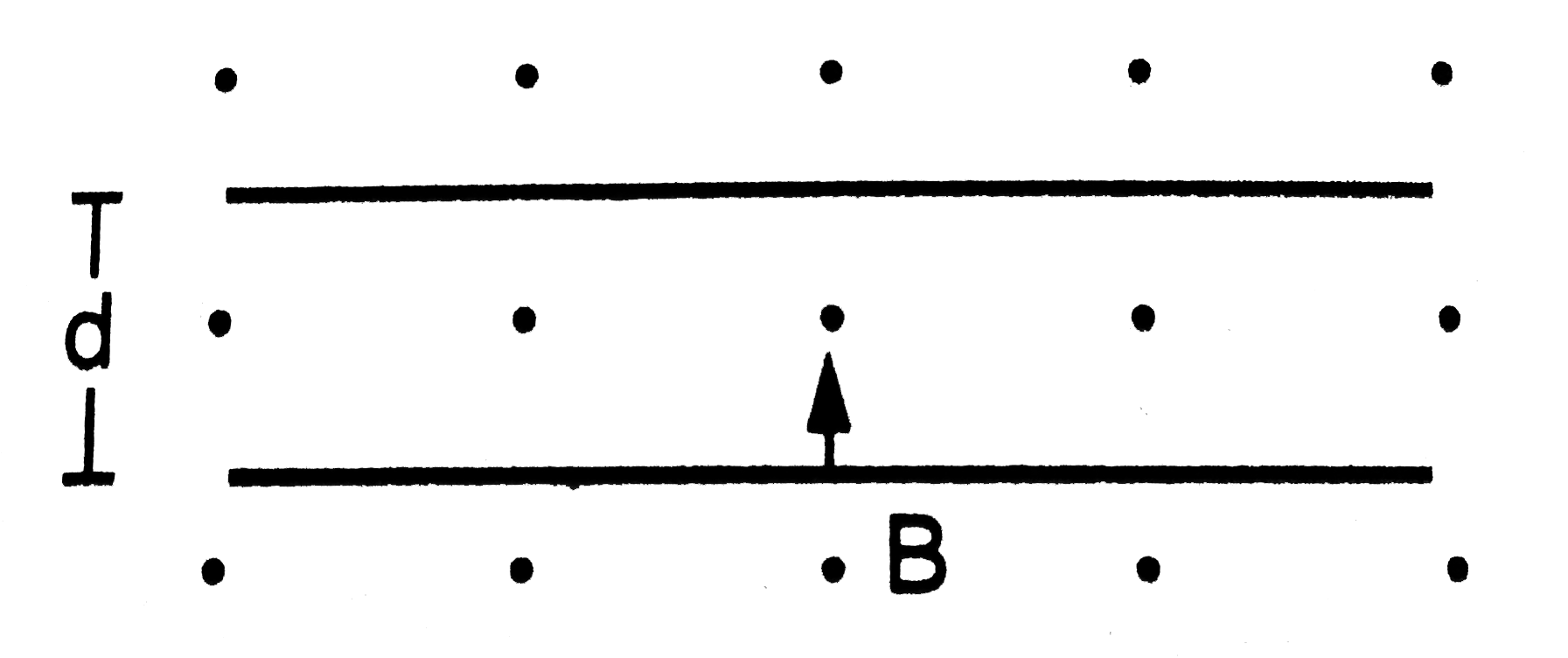a. How many excess electrons must be added to one plate and removed from the other to give a parallel plate capacitor of stored energy ?
b. How could you modify the geometry of this capacitor so that can store of energy without changing the charge on its plates?
a.
The number of electrons that must be removed from one plate and added to the other is
electrons
b. To double while keeping constant, decrease by a factor of . , halve the plate area or double the plate separation.
Topper's Solved these Questions
- CAPACITOR AND CAPACITANCEBOOK - CENGAGE PHYSICS ENGLISHCHAPTER - CAPACITOR AND CAPACITANCEEXERCISE - Exercise 4.2
32 Videos
- CAPACITOR AND CAPACITANCEBOOK - CENGAGE PHYSICS ENGLISHCHAPTER - CAPACITOR AND CAPACITANCEEXERCISE - Subjective
24 Videos
- CAPACITOR AND CAPACITANCEBOOK - CENGAGE PHYSICS ENGLISHCHAPTER - CAPACITOR AND CAPACITANCEEXERCISE - Solved Examples
10 Videos
- ATOMIC PHYSICSBOOK - CENGAGE PHYSICS ENGLISHCHAPTER - ATOMIC PHYSICSEXERCISE - ddp.4.3
15 Videos
- CENGAGE PHYSICS DPPBOOK - CENGAGE PHYSICS ENGLISHCHAPTER - CENGAGE PHYSICS DPPEXERCISE - subjective type
51 Videos
Similar Questions
Using the concept of energy density, find the total energy stored in a
a. parallel plate capacitor
b. charged spherical conductor.
View SolutionThe separation between the plates of a parallel-plate capacitor is 2 mm and the area of its plates is 5cm2. If the capacitor is charged such that it has 0.01J energy stored in it, the electrostatic force of attraction between its plates is _______N.
View SolutionAnswer the following:
(a) Describe briefly the process of transferring charge between the two plates of a parallel plate capacitor when connected to a battery. Derive an expression for the energy stored in a capacitor.
(b) A parallel plate capacitor is connected to a battery of potential difference V. It is disconnected from battery and then connected to another uncharged capacitor of the same capacitance. Calculate the ratio of the energy stored in the combination to the initial energy on the single capacitor.
View SolutionA 5.80μF parallel-plate air capacitor has a plate separation of 5.00mm and is charged to a potential difference of 400V. Calculate the energy density in the region between the plates, in Jm3
View SolutionA 10.0μF parallel-plate capacitor with circular plates is connected to a 12.0V battery.
(a) What is the charge on each plate?
(b) How much charge would be on the plates if their separation were doubled while the capacitor remained connected to the battery?
(c) How much charge would be on the plates if the capacitor were connected to the 12.0V batter Y after the radius of each plate was doubled without changing their separation?
View SolutionA capacitor with capacitance 6×10−5F is charged by connecting it to a 12−V battery. The capacitor is disconnected from the battery and connected across an inductor with L=1.50H.
a. What are the angular frequency ω of the electrical oscillations and the period of these oscillations (the time for one oscillation)?
b. What is the intial charge on the capacitor?
c. How much energy is intially stored in the capacitor?
d. What is the charge on the capacitor 0.0230 s after the connecting to the inductor is made? Interpret the sign of the your answer.
e. At the times given in part (d), what is the current in the inductor? Interpret the sign of your answer.
f. At the time given in part (d), how much electrical energy is stored in the capactior and how much is stored in the inductor?
View SolutionAn electron is emitted with negligible speed from th nagative plate of a parallel plate capacitor charged ot a potential difference V. The separtion between the plates is d and a magnetic field B exists in the space as shown in . Show that the electron will fail to strike the upper plate if ltdgt (2meVeB20)12.

View SolutionA parallel plate vacuum capacitor with plate area A and separation x has charges +Q and −Q on its plates. The capacitor is disconnected from the source of charge, so the charge on each plate remains fixed.
(a) What is the total energy stored in the capacitor?
(b) The plates are pulled apart an additional distance dx. What is the change in the stored energy?
(c) If F is the force with which the plates attract each other, then the change in the stored energy must equal the work dW=Fdx done in pulling the plates apart. Find an expression for F.
(d) Explain why F is not equal to QE, where E is the electric field between the plates.
View SolutionThe distnace between the plates of a parallel plate capacitor is 3 mm the potential difference applied is 3×105 V. If an electron travels from one plate to another the change in its potential energy is
View SolutionA charge Q is given to the plates of an isolated capacitor of capacitance C. Now, the terminals of this capacitor are connected to the terminals of an inductor L at t = 0. After how much time will the energy stored in the capacitor and the Inductor become equal?
View Solution
